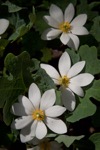Notice (8): Undefined index: geoplugin_countryCode [APP/Controller/AppController.php, line 94]Code Context$Country_code = '';if($ip_data && $ip_data['geoplugin_countryCode'] != null) {$Country_code = $ip_data['geoplugin_countryCode'];$client = null $forward = null $remote = '216.73.216.104' $ip = '216.73.216.104' $ch = unknown $ip_data_in = '{ "geoplugin_status":429, "geoplugin_message": "Blacklisted due to sending too many requests to geoplugin.net. Consider whitelisting your IP or domain", "geoplugin_url": "https://www.geoplugin.com/premium/" } ' $ip_data = [ 'geoplugin_status' => '429', 'geoplugin_message' => 'Blacklisted due to sending too many requests to geoplugin.net. Consider whitelisting your IP or domain', 'geoplugin_url' => 'https://www.geoplugin.com/premium/' ] $Country_code = ''App\Controller\AppController::initialize() - APP/Controller/AppController.php, line 94 App\Controller\ProductsController::initialize() - APP/Controller/ProductsController.php, line 31 Cake\Controller\Controller::__construct() - CORE/src/Controller/Controller.php, line 273 ReflectionClass::newInstance() - [internal], line ?? Cake\Http\ControllerFactory::create() - CORE/src/Http/ControllerFactory.php, line 47 Cake\Http\ActionDispatcher::dispatch() - CORE/src/Http/ActionDispatcher.php, line 91 Cake\Http\BaseApplication::__invoke() - CORE/src/Http/BaseApplication.php, line 235 Cake\Http\Runner::__invoke() - CORE/src/Http/Runner.php, line 65 Cake\Http\Runner::__invoke() - CORE/src/Http/Runner.php, line 65 Cake\Http\Middleware\CsrfProtectionMiddleware::__invoke() - CORE/src/Http/Middleware/CsrfProtectionMiddleware.php, line 104 Cake\Http\Runner::__invoke() - CORE/src/Http/Runner.php, line 65 Cake\Http\Runner::run() - CORE/src/Http/Runner.php, line 51 Cake\Routing\Middleware\RoutingMiddleware::__invoke() - CORE/src/Routing/Middleware/RoutingMiddleware.php, line 168 Cake\Http\Runner::__invoke() - CORE/src/Http/Runner.php, line 65 Cake\Routing\Middleware\AssetMiddleware::__invoke() - CORE/src/Routing/Middleware/AssetMiddleware.php, line 88 Cake\Http\Runner::__invoke() - CORE/src/Http/Runner.php, line 65 Cake\Error\Middleware\ErrorHandlerMiddleware::__invoke() - CORE/src/Error/Middleware/ErrorHandlerMiddleware.php, line 96
| Scientific: | Sanguinaria canadensis |
|---|---|
| Other: | Bloodroot |
| Family: | Papaveraceae |
Bloodroot grows wild in North America and has been used by herbalists for centuries. It is not commonly prescribed because of some safety concerns that exist. Bloodroot irritates tissue and can cause cell death at higher doses. It is classified as an escharotic because it destroys tissues to produce an " eschar " or scab.
Bloodroot applied topically to warts causes shedding of the outer layer of skin and removal of the lesion. Herbalist once applied " black salves " containing bloodroot and other caustic compounds (e.g. zinc chloride) topically to cancers and other skin lesions. However " black salves " are not recommended because they can cause serious disfiguring tissue damage and safer treatments exist.
Internally, bloodroot was historically recommended for bronchitis associated with significant mucous. Because it is irritating to mucous membranes, small amounts increase the hydration and volume of mucous produced in the lungs making it a useful expectorant. The roots contains isoquinoline alkaloids (e.g. sanguanaire) that also possess antimicrobial actions.
Caution: bloodroot is toxic and should only be used under the supervision of a qualified healthcare provider.
Antimicrobial activity make it useful in treating respiratory conditions while escharotic actions make it useful as a topical agent.
Dermatologic
• applied topical to burn off:
- warts
- skin cancer
- cervical dysplasia
- nasal polyps
• fungal infections
Respiratory
• bronchitis, and other respiratory conditions associated with congestion and mucous
• Expectorant
• Emetic
• Escharotic
• Antimicrobial
• Antibacterial
• Bitter
• Hemostatic
• Isoquinoline Alkaloids • Generally Act As Bitters And Antimicrobials; Known To Affect Cardiac Function Via Na/K Atpase. Sanguinarine Is Corrosive, Making It A Topical Irritant And Escharotic.
Like Other Emetics That Contain Isoquinoline Alkaloids (E.g. Ipecac), Increases Gastrointestinal And Respiratory Secretions; At Lower Doses, Functions As An Expectorant Without Causing Emesis.
Nothing
• Tincture (1:5 in 60% EtOH): 0.5-1 ml tid
• Decoction (rhizome): 1 tsp tid
• Topically: apply a slice of fresh root or tincture to lesion for 1 min.
Internal use: Considered toxic and should not be used at high doses.
High doses: Cause nausea and vomiting.
Long-term use: Oral/topical exposure to mucous membranes may cause leukoplakia. Monitor liver function.
Pregnancy & lactation: Studies are lacking but herbs containing isoquinoline alkaloids, bloodroot should be avoided during pregnancy and lactation.
Liver toxicity: Sanguinarine may be hepatoxic. Drug-induced hepatitis in those consuming isoquinoline alkaloid-containing herbs (e.g. greater celandine, black cohosh) have been reported. Monitor liver function if using long-term.
None reported.
Barnes J, Anderson LA, Phillipson JD. Herbal Medicines, 3rd ed. London: Pharmaceutical Press, 2007.
Bone K. Principles and Practice of Phytotherapy. Edinburgh: Churchill Livingstone, 2000.
Bone K. A Clinical Guide to Blending Liquid Herbs: Herbal Formulations for the Individual Patient. St Louis, MO: Churchill Livingstone, 2003.
Brinker F. The Toxicology of Botanical Medicines, 3rd ed. Sandy, Oregon: Eclectic Medical Publications, 2000.
Felter HW, Lloyd JU. King's American Dispensatory. 1898. http://www.ibiblio.org/herbmed/eclectic/kings/main.html. Accessed: August 19, 2006.
Hoffman D. Medical Herbalism. Rochester, Vermont: Healing Arts Press, 2003.
Weiss RF. Herbal Medicine. Beaconsfield, England: Beaconsfield Publishers Ltd, 1988.
Williamson EM, ed. Major Herbs of Ayurveda. Edinburgh: Churchill Livingstone, 2002
Disclaimer: This content is subject to change. The information is intended to inform and educate; it does not replace the medical evaluation, advice, diagnosis or treatment by a healthcare professional. www.nhpassist.com © 2014 NDAssist Inc. and/or its affiliates. All rights reserved.

|
Bloodroot
SummaryBloodroot grows wild in North America and has been used by herbalists for centuries. It is not commonly prescribed because of some safety concerns that exist. Bloodroot irritates tissue and can cause cell death at higher doses. It is classified as an escharotic because it destroys tissues to produce an " eschar " or scab. IndicationsSign in requiredActionsSign in requiredConstituentsSign in requiredPharmacologySign in requiredPosologySign in requiredSafetySign in requiredInteractionsSign in requiredReferencesSign in required |
|---|